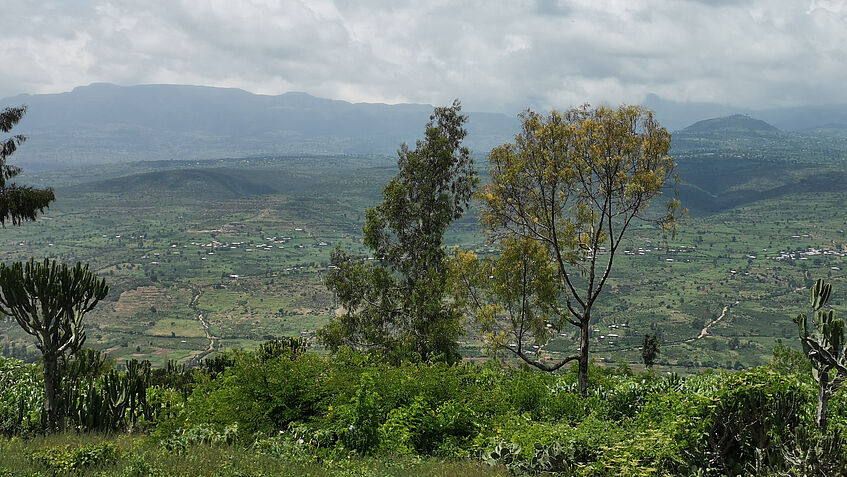
Kersa Woreda (Source: C. Garcia, 2022)
Understanding immobility in the context of environmental change: A mixed methods study of Eastern Ethiopia
PhD Project: Coline Garcia (IfGR, University of Vienna)
Duration: 2021 – 2025
Funding: Vienna International School of Earth and Space Sciences (VISESS)
Abstract
With the current state of pledges and mitigations strategy in place, the level of exposure to climate-related stresses is expected to increase and intensify significantly, putting population at risk and increases the need for adaptation. As the Intergovernmental Panel for Climate Change (IPCC) highlights, the world is on the one hand, not equally responsible for climate change and on the other, not equally affected by the impact of climate change. The climate justice issue is particularly striking for the case of Africa which although it contributed the least to greenhouse emission, it is the most affected by climate change and it has the least resources and institutional capacities for climate change adaptation.This raises the question of the role and the limits of autonomous adaptation.
Since the publication of the Foresight report, research has established that immobility is an equally likely outcome of environmental and climate change exposure. The main reason for people to become immobile in the face of environmental stressors is that migration requires resources (such as social network among others), and in some cases, these resources can no longer be provided if certain forms of natural capital are undermined by climate change. In this sense, highly vulnerable and deprived population are the most likely to become trapped in situ. Since then, research on immobility has evolved substantially and authors have shown that, immobility exists under certain forms: (in)voluntary and acquiescent. Overall, there is an unequal attention given to immobile populations and those who chose to remain despite environmental stressors, and there is still a need to specifically focus on the role of immobility as an adaptation to climate change.
The overarching aim of the PhD project is to understand the role of immobility for environmental and climate change adaptation. The project will identify different types of immobility, decipher the mechanisms behind them and assess the effect of immobility for adaptation outcomes. On a conceptual level, it will combine aspiration-capability framework with the notion of the limits of adaptation. The understanding of immobility for climate change adaptation will be exemplified by the case of Kersa, Haramaya and Harar districts in Eastern Ethiopia. The project will employ a mixed methods research design combining the quantitative Health and Demographic Surveillance System (HDSS) data from the districts, and qualitative data from field research conducted in the rural and urban areas.
